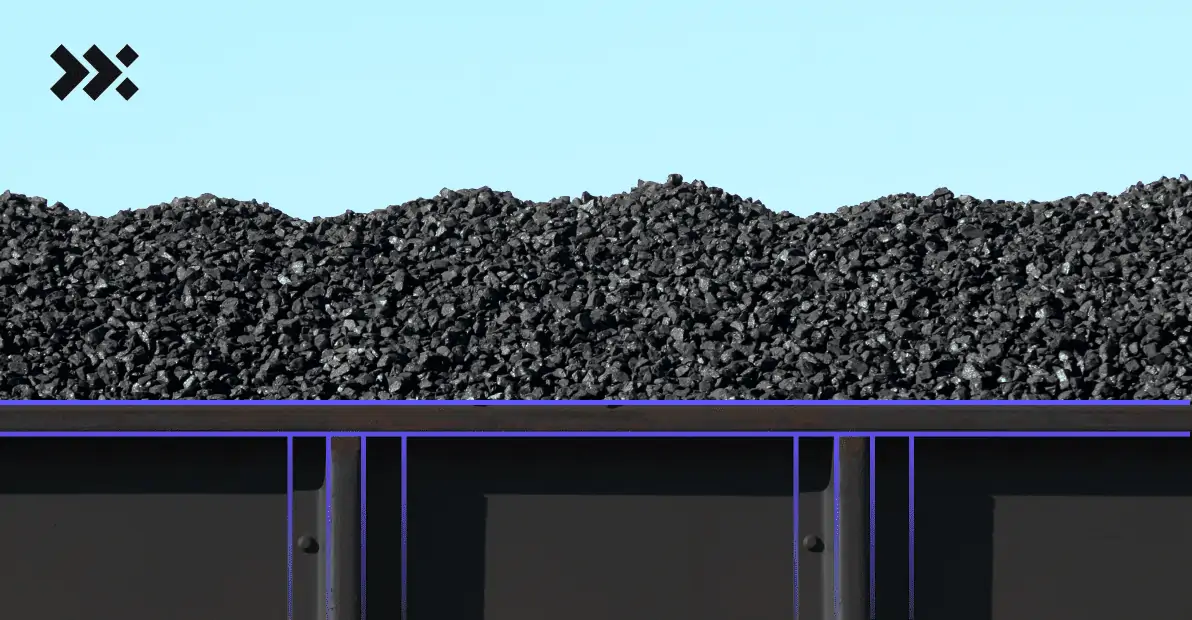Key takeaways:
- IECEx certified asset monitoring technologies improves the safety of dangerous goods being transported by land, sea, or air.
- The total value of charcoal exported by countries worldwide was recorded at $1.33 billion in 2020.
- Charcoal is classified as a dangerous good due to the likelihood of its spontaneous combustion.
The transportation of any material – whether by rail, road, air, or sea – carries certain risks. Accidents happen even when all the relevant safety protocols are followed. When the transported materials are classified as “dangerous goods,” the risks increase significantly. Dangerous goods, or hazardous materials, includes various cargo, from lithium batteries to infectious substances, that pose a risk to health, safety, property, or the environment.
Charcoal is one of the most common materials in dangerous goods transportation. Globally, the value of charcoal exported by countries worldwide totalled $1.33 billion in 2020 – a rise of 7.2%. Of course, charcoal is commonly used for outdoor cooking, but it also has industrial uses in the form of activated charcoal. This type of charcoal has several applications, including absorbing odorous or coloured substances from gases or liquids, purifying water and other products, and removing toxic compounds.
The reason that charcoal has been characterized as a dangerous good is due to its combustibility. With charcoal, an external energy source is not required to cause a fire in the shipping container or vessel in which it is being transported. It is considered to be a self-heating substance. It can become hotter through friction in transit, the fine dust can be explosive and the loading of the product is not always monitored so it’s sometimes packed into containers at high temperatures to begin with as producers are reluctant to delay shipment by allowing it to properly cool down. This is the primary reason why substantial safety measures are enforced when charcoal is being transported.
What is the current charcoal transportation landscape?
Today, charcoal is generally transported in bulk using intermodal shipping containers. The Cargo Incident Notification System (CINS) is an initiative from the shipping lines or carriers established in September 2011, developed to increase safety in freight transportation and the supply chain. Charcoal (and other related carbon products) must be transported in compliance with the International Maritime Dangerous Goods (IMDG) Code, which assigns it a 4.2 classification, meaning it is liable to spontaneously combust.
The CINS also provides additional guidance regarding the safe transportation of charcoal, including advice on packaging, container selection, and inspection before carriage. While these rules are comprehensive, they are not universal. Other guidelines apply when charcoal is transported via other methods, including rail, road, or air.
Regardless of the method used to transport charcoal, recent accidents have demonstrated that the risk posed by combustible materials is very real. For example, in January of last year, a Sri Lankan cargo ship carrying almost 1,500 containers of hazardous materials faced a substantial blaze that took 13 days to extinguish. The fire, which highlighted the risks inherent when transporting dangerous goods at sea, resulted in significant environmental and economic damage and whats been termed ‘the biggest spill of plastic the world has ever witnessed’. Then, in October 2021, a similar incident occurred involving a fire aboard a cargo ship traveling off the coast of British Columbia, Canada. Unfortunately, these events are not isolated incidents.
Technology and safe transportation
Given that charcoal transportation comes with unavoidable hazards, logistics providers should employ the most stringent safety protocols possible. Fortunately, technology can greatly improve safety – particularly in the event of an accident. Asset monitoring solutions, for example, can leverage real-time data to give enhanced visibility regarding the temperature of charcoal and provide alerts should abnormal temperature events be detected. This offers an advanced warning when the conditions that lead to fire are emerging.
Aside from fire-related accidents, other conditions cause damage to charcoal cargo during transportation. Activated charcoal has a high porosity, which means it has a large surface area to absorb moisture. While this quality is valued by industry, exposure to moisture or humid environments during transportation can spoil the cargo. Shipping container monitoring technology with humidity sensors can provide certainty by ensuring charcoal is kept in the optimal range throughout its transportation. This TradeTech also enables charcoal traders to monitor transfers between supply chain partners and generally offers peace of mind when dangerous goods are being moved. Visibility helps stakeholders manage risks, increase efficiency and reduce costs.
How does Nexxiot ensure the safety of your charcoal transportation?
At Nexxiot, we realize that dangerous goods have essential uses which make their transportation necessary. For charcoal suppliers and logistics firms, transportation comes with significant risk – but these can be mitigated through technology.
We treat safety as a top priority. Our hardware follows the IECEx System objective to ensure the required level of safety in international trade. Nexxiot hardware is IECEx certified which proves it is compliant with safety requirements of the equipment which is used in hazardous areas and does not carry the risk of fires or explosions.
Nexxiot’s Connect Intelligent Cloud, in combination with our IECEx-certified sensors and gateways allow supply chain stakeholders to better monitor and track their assets. This enables them to make decisions based on real empirical data and business intelligence.
Find out how our technology can bring assurance and security when transporting dangerous goods like charcoal. Get in touch with us today.

